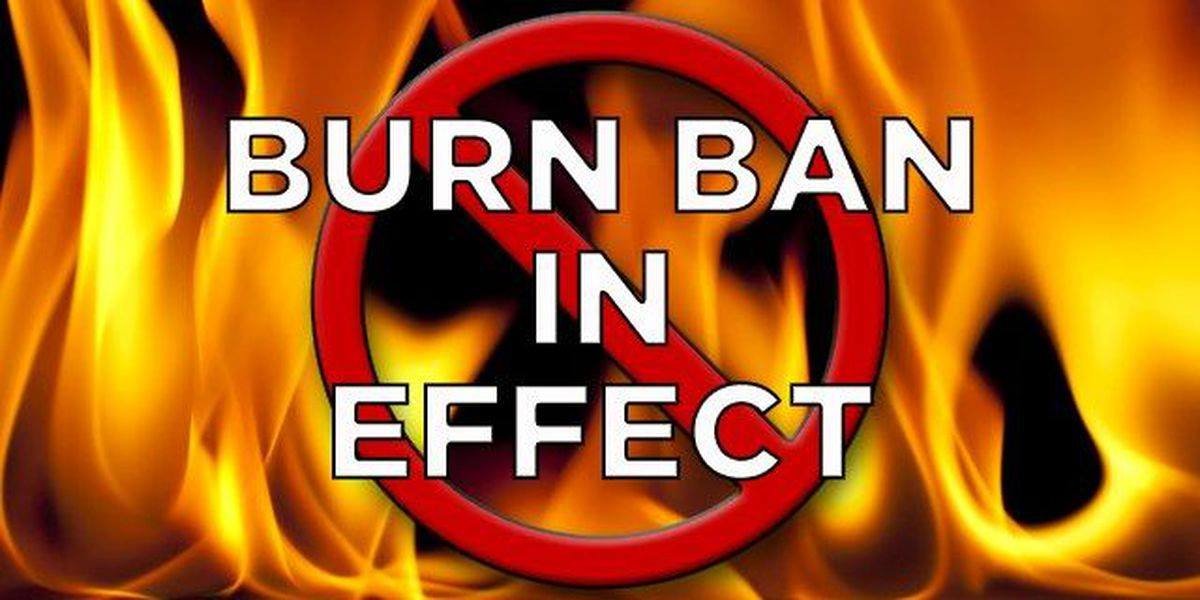Gonzales County commissioners ban outdoor burning
Gonzales County commissioners approved an emergency ban on outdoor burning at their regular meeting Monday, July 24.
The ban is effective immediately and will remain in place until rescinded by the court after it has been determined the county has received enough precipitation to cut the fire risk.
However, commissioners also approved an outdoor burn permit form that would be issued by County Emergency Management Coordinator and Fire Marshal Jimmy Harless on a case by case basis that would allow a resident or business to perform outdoor burning.
“You may not burn without a permit. You must come to my office located at 1811 Water St. (across from O’Reillys Auto) and fill out a burn ban permit application,” Harless said. “You will need to explain to me why it’s absolutely necessary to burn while Gonzales County is under a burn ban. If the permit is issued, you must follow the county and TCEQ rules. The whole idea is to protect property and our firefighters when Gonzales County is dangerously dry.”
Burn ban needed
Harless told commissioners the county continues to suffer from dry and hot weather which has created a high risk for wildfires. He reminded them how local fire departments spent several days last week battling a blaze near Palmetto State Park that consumed 55 acres.
“Firefighters had to spend about two and a half days there, along with the Texas Forest Service. It was tough. It was hot and they had to stay overnight and watch it once we got the perimeter dozed,” Harless said.
“I've received some email requests asking that the court consider the burn ban. I personally think you need it and as soon as possible. This little rain we got has been spotty, so I don't know that it really really helped us a whole lot. We've got a lot of fuel out there from the rains in June. That concerns me. I've talked to the fire chiefs and they feel the same way.”
Texas A&M Forest Service (TFS), which monitors wildfire conditions for the state, uses the Keetch-Byram Drought Index (KBDI) for determination of drought conditions within the State of Texas. KBDI was developed by John L. Keetch and George Byram with the US Forest Service Southeastern Research Station to correlate the effects of drought on wildfire potential.
The KBDI is based on a daily water balance, where a drought factor is balanced with precipitation and soil moisture (assumed to have a maximum storage capacity of eight inches) and is expressed in hundredths of an inch of soil moisture depletion.
The KBDI attempts to measure the amount of precipitation necessary to return the soil to full field capacity. It is a closed system ranging from 0 to 800, where 0 represents a saturated soil, and 800 an absolutely dry soil. At any point along the scale, the KBDI value indicates the amount of precipitation it would take to bring the moisture level back to zero, or saturation.
As of Monday, July 24, the county had a KDBI of had a KBDI average of 595, which includes a high of 658 near Ottine and Belmont and near Waelder and a low of 464 on US 183 near the DeWitt County line. This represents an increase of 40 points since Tuesday, July 18 and an increase of 216 points over the average of 379 reported on July 1.
When the KDBI falls between 600-800, this is often associated with more severe drought with increased wildfire occurrence. Intense, deep-burning fires with extreme intensities can be expected. Live fuels can also be expected to burn actively at these levels.
Anyone who violates the burn ban can be cited at the discretion of Harless or a peace officer for a Class C misdemeanor, which is punishable by a fine of up to $500. However, there are exemptions in place for non-commercial preparation of food or burning of prickly pear for livestock feed, as well as wildfire mitigation or “prescribed fires conducted in compliance with guidelines set forth by federal or state natural resource agencies and burned under a burn plan approved by such agencies. Prior to a burn, a burn ban application shall be submitted to the Gonzales County Fire Marshal.”
Permit form approved
County Judge Pat Davis said in the past, those applications required landowners to go to several offices — his, the sheriff, the fire department — before getting the necessary approval to burn.
“We’d have our landowners that were coming in here that may need to burn stuff that were having to run all over town,” Davis said. “If they put the outdoor burn ban form through (Harless), he can make the phone calls to the sheriff and fire departments and go out an inspect what needs to be burned so they don’t have to make but one trip.”
Harless said there is no charge for a burn permit and “if there's something that's extensive or significant, I would run out there and look at it to make sure that their burn piles are cleared and that they have water available.”
Harless said there are parameters which apply, including fires must be attended until completely extinguished.
Prevailing winds must be away from nearby occupied buildings; fires cannot be allowed to smolder without flame; nor can anyone burn oils, rubber plastics, tire and chemically treated materials such as railroad ties, treated lumber, composite shingles, tar paper, insulation, composition board, sheet rock, wiring, paint, hazardous and industrial solid waste.
The local volunteer fire department and Gonzales County Sheriff’s Department must be notified of a burn at least 30 minutes prior to lighting the fire.
“They can’t burn at night and the humidity has to be at a certain percentage and the wind has to be at a certain speed,” Harless added.
Comments









